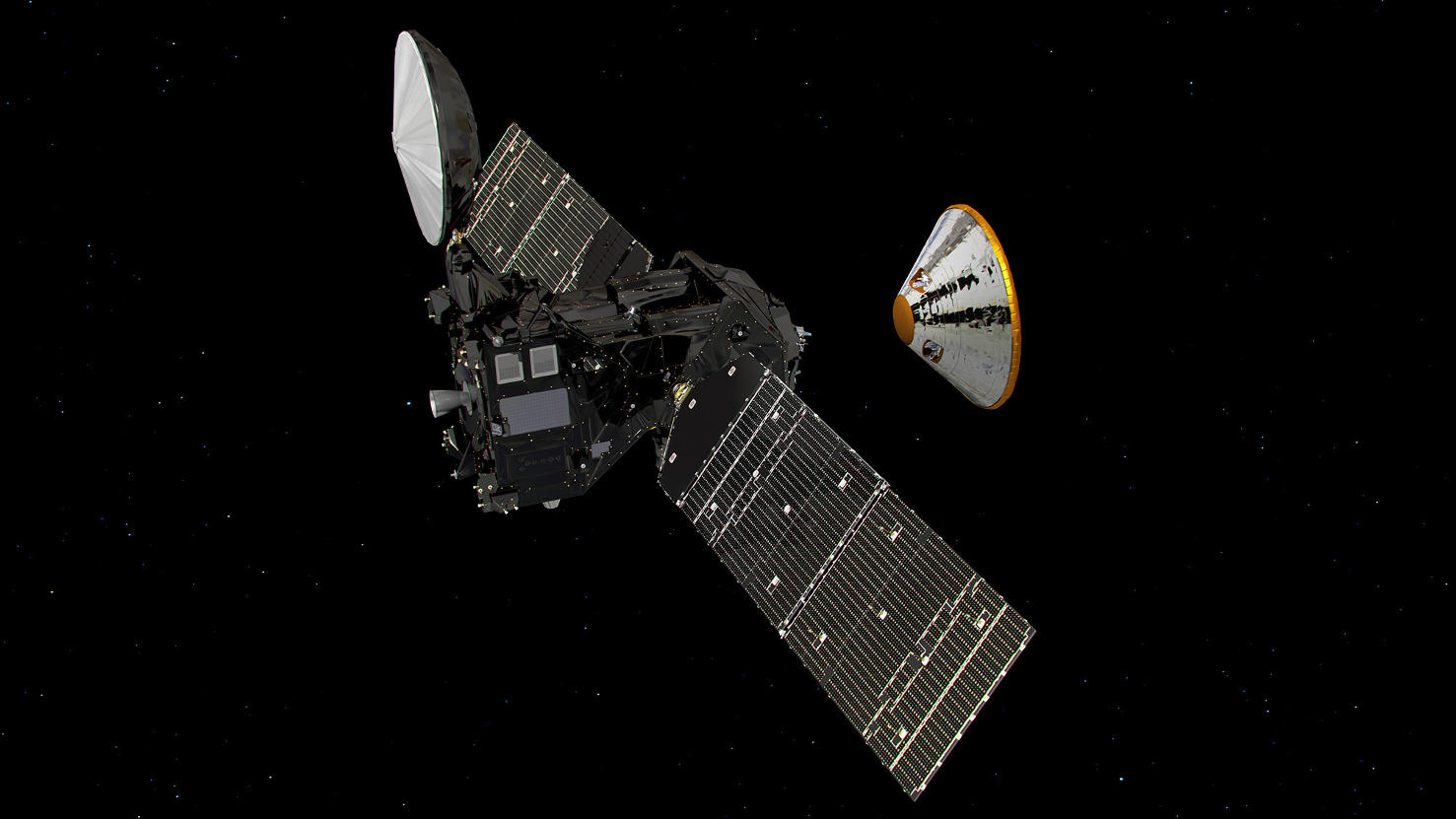Europe has its fingers crossed as its Schiaparelli module prepares to touch down on the surface of the Red Planet, scheduled to occur at 14h47 UTC on 19th October. The module separated from its companion ship, the Trace Gas Orbiter (TGO), on 16th October and is now on track for a rendezvous with the Martian atmosphere, while the TGO remains in orbit. If successful, it will be the first European craft to touch down on the Red Planet and return data.
Together, the TGO and the Schiaparelli entry, descent and landing demonstrator module constitute the first of two planned ExoMars missions. The second is planned for launch in 2020 and comprises a rover and surface science platform. The ExoMars programme is a joint endeavour between the European Space Agency (ESA) and Russian space agency Roscosmos, which replaced NASA after the U.S. agency backed out of the programme. Proton launchers are being used for both missions.
TGO’s main objectives are to search for evidence of methane and other trace atmospheric gases that could be signatures of active biological or geological processes. Schiaparelli will test key technologies in preparation for ESA's contribution to subsequent missions to Mars.
The 2020 rover that will carry a drill and a suite of instruments dedicated to exobiology and geochemistry research. The 2016 TGO will act as a relay for the 2020 mission.
If all goes according to plan, Schiaparelli will enter the atmosphere at an altitude of about 121km and a speed of nearly 21,000km/h. In the three to four minutes that follow, it will be slowed by the increasing atmospheric drag, with the front shield of the aeroshell bearing the brunt of the heating. This will slowly melt and vaporise, allowing the absorbed heat to be carried away from the rest of the spacecraft.
A parachute will slow Schiaparelli to around 250km/h, and then the back half of the aeroshell, with the parachute attached to it, will also be jettisoned. Schiaparelli will then activate its three hydrazine thrusters to control its speed. At an altitude of around 2 m, Schiaparelli will briefly hover before cutting its thrusters, leaving it to fall freely. The impact will be absorbed by a crushable structure on the underside of the lander. The entire entry, descent and landing sequence will be complete in less than six minutes.
While Schiaparelli is landing on Mars, TGO will conduct a critical engine burn with its main engine to slow down sufficiently to be captured into an initial orbit. In January 2017 TGO’s orbit will be adjusted to an inclination of 74°, which is optimised for its science and radio relay missions, and it will move from a 4-day to a 1-day orbit.

